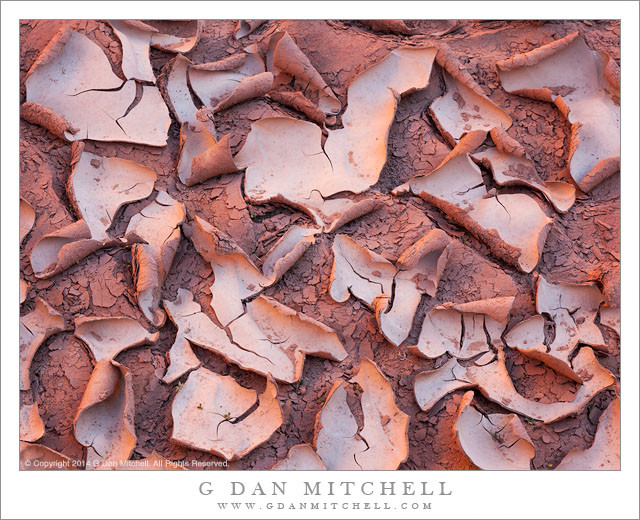
Cottonwood Trees and Red Rock Canyon, Autumn. Utah. October 26, 2014. © Copyright 2014 G Dan Mitchell – all rights reserved.
Brilliantly colorful autumn cottonwood foliage winds down a Utah red rock canyon
After four days of photography and camping in the far reaches of the Grand Staircase-Escalante National Monument, I came out to civilization and spent a night at Boulder Mountain Lodge. (Not my usual thing, but I had an appointment to meet someone there — and it was quite a fine visit!) Arriving a bit early, I decided to head out on a nearby road just to see what I could see.
I knew this road a bit from traveling it in the past — I was looking forward to red rock cliffs and some cottonwood color. But I was not prepared for the intensity of the autumn cottonwoods in this little canyon. The effect was a combination of arriving at the peak moment of color for these trees, and the fact that the light was slightly softened by some high clouds. The result was one of those colorful scenes that you imagine but rarely actually find, with the tree winding down the canyon and around the far bend.
 G Dan Mitchell is a California photographer and visual opportunist. His book, “California’s Fall Color: A Photographer’s Guide to Autumn in the Sierra” is available from Heyday Books and Amazon.
G Dan Mitchell is a California photographer and visual opportunist. His book, “California’s Fall Color: A Photographer’s Guide to Autumn in the Sierra” is available from Heyday Books and Amazon.
Blog | About | Flickr | Twitter | Facebook | Google+ | 500px.com | LinkedIn | Email
All media © Copyright G Dan Mitchell and others as indicated. Any use requires advance permission from G Dan Mitchell.



